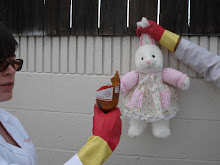If you’ve been living underground for the past week, you’ve missed the pseudo Apocalypse that has born down upon Southern California. FIRE SEASON. I grew up in Southern California and can remember years and years of yellow skies and soot dust and chapped lips and sneezing. Fire Season coincides with the appearance of the Santa Ana Winds, also known as The Winds That Drive Everybody Apeshit.

Adiabatic compression means that when you squeeze something, it heats up. You should be somewhat familiar with this if you’ve ever pumped up a bike or car tire. Even though you’re not heating the tire directly, pressurizing the gas inside increases the tire’s temperature. The diagram above illustrates this point with a Pressure vs. Volume plot which includes two isotherms (or lines of constant temperature). Any point that lives on an isotherm has the same temperature even if it has a different pressure and volume than a neighboring point. Adiabatic change means that you’re going to jump from one isotherm to another by changing your volume or pressure. Increase in volume and you decrease the pressure, so you’ll jump to a lower isotherm (cooling). Decrease the volume and you’ll increase the pressure, in which case you’ll move up to a higher isotherm (heating).
That’s why the Santa Ana Winds are so gosh darn hot and dry. Until next time, keep safe out there, gang.


2 comments:
You neglected to mention the fire in your pants...disappointing? VERY.
nice super furry animals reference
Post a Comment